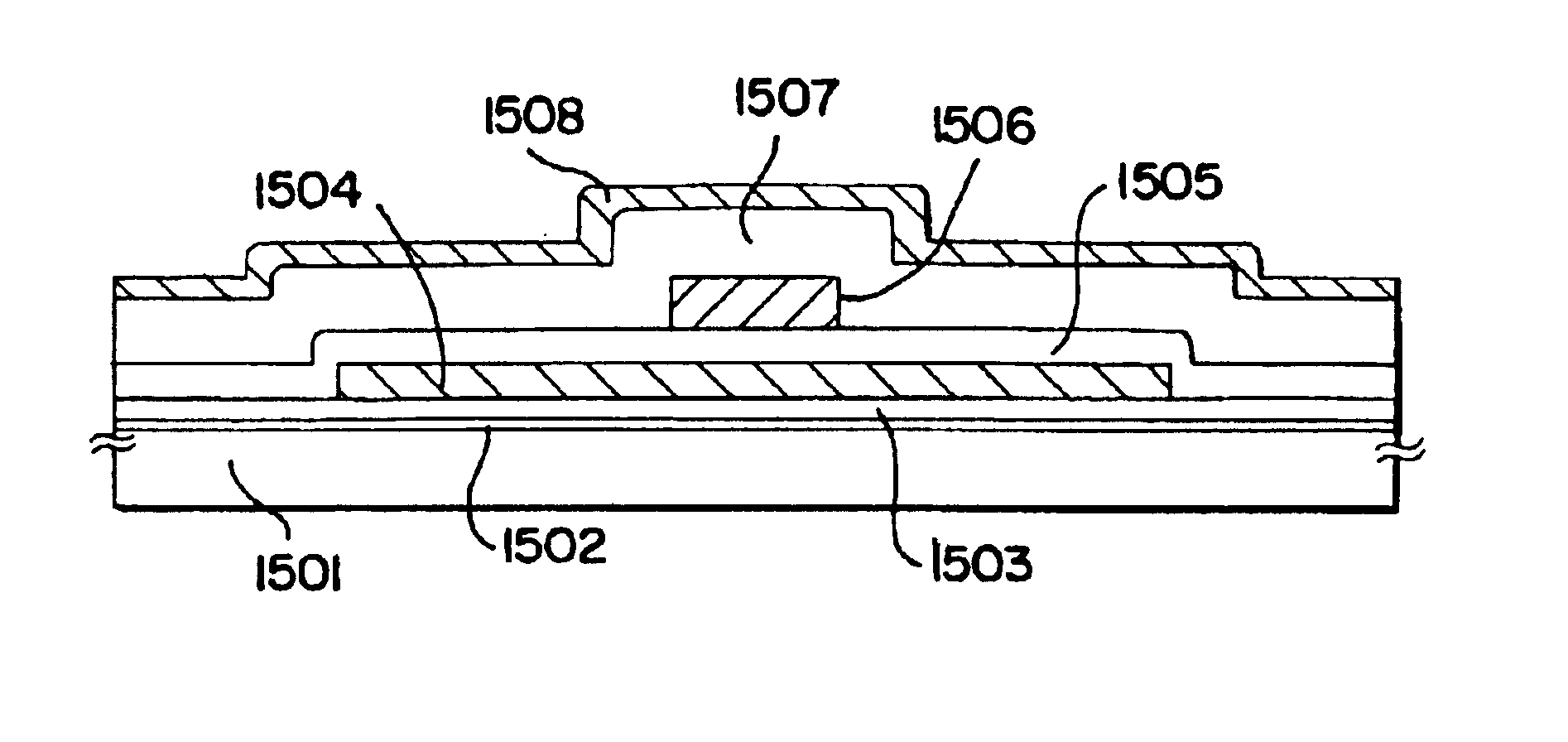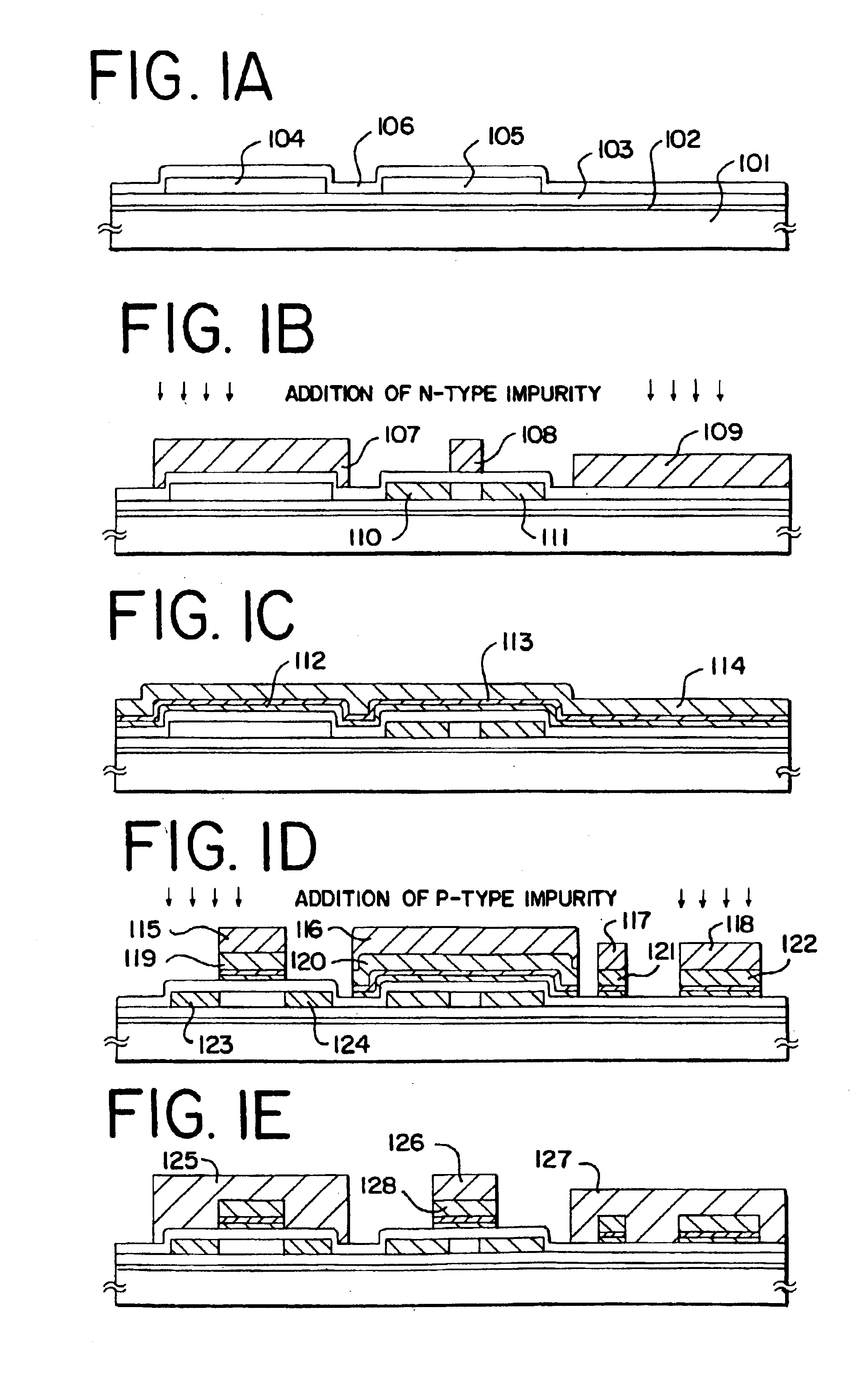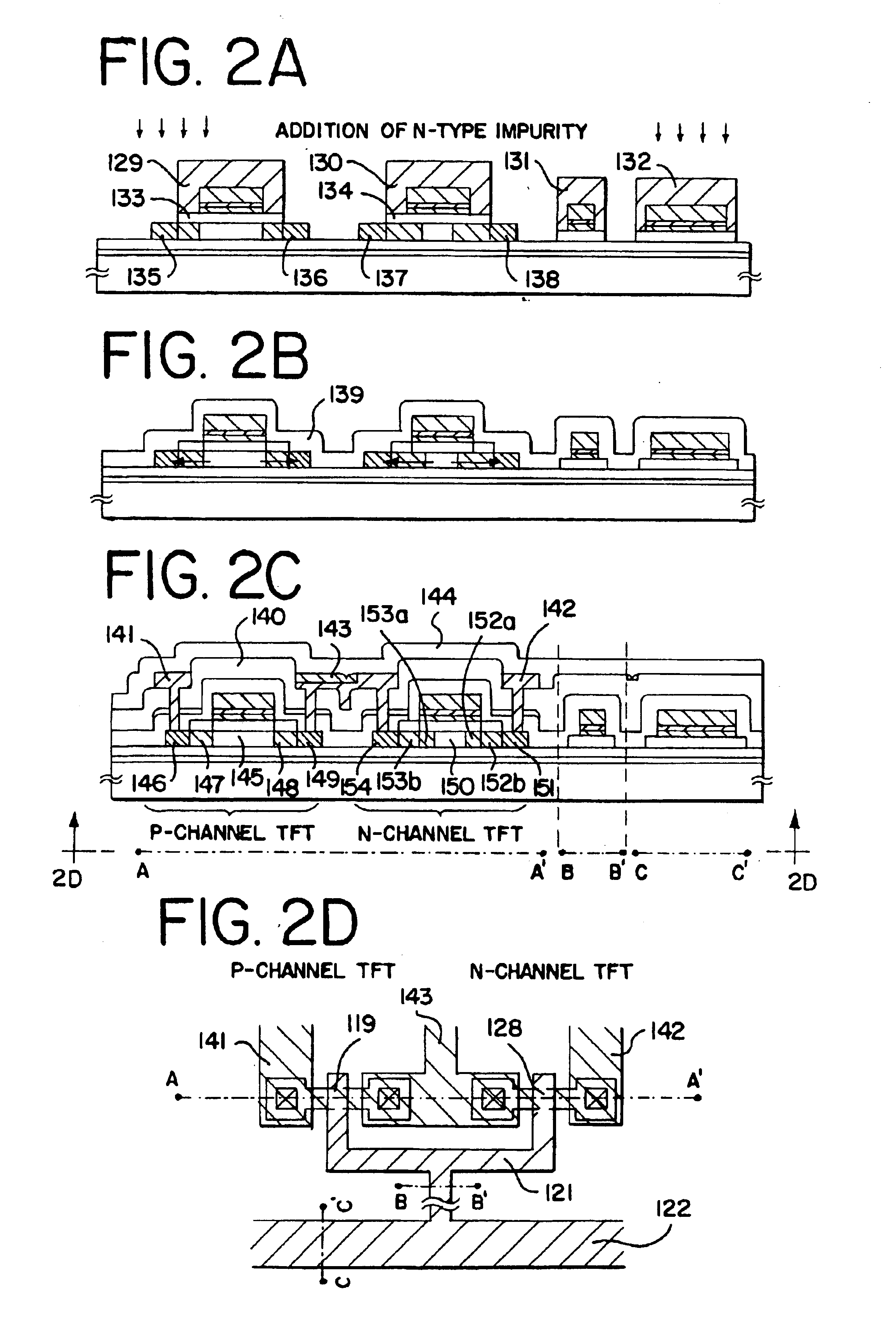Semiconductor device and fabrication method thereof
a semiconductor film and semiconductor technology, applied in the direction of semiconductor/solid-state device details, instruments, coatings, etc., can solve the problems of affecting the electric characteristics of tft, reducing the mobility of the carrier and the life time, and damage to the crystalline semiconductor film, etc., to achieve high performance and efficient processing
- Summary
- Abstract
- Description
- Claims
- Application Information
AI Technical Summary
Benefits of technology
Problems solved by technology
Method used
Image
Examples
example 1
An example of the present invention will be explained in detail about an inverter circuit as the basic construction of a CMOS circuit, by way of example, with reference to FIGS. 1 and 2. Referring to FIG. 1(A), underlying films 102 and 103 are shown formed over a substrate 101 having an insulating surface. The underlying film 102 is a nitrogen-rich silicon nitride oxide film having a nitrogen concentration of at least 25 atomic % to less than 50 atomic %, and its thickness is 20 to 100 nm and typically 50 nm. The underlying film 103 is a silicon nitride oxide film having a nitrogen concentration of at least 5 atomic % to less than 25 atomic %, and its thickness is 50 to 500 nm, typically 150 to 200 nm. A first island-like semiconductor film 105, a second island-like semiconductor film 104 and a gate insulating film 106 are formed over the former. The island-like semiconductor films are acquired by separating into an island shape the crystalline semiconductor film that is in turn for...
example 2
In this example, a method of fabricating an active matrix substrate having a pixel matrix circuit and a CMOS circuit as a basic form of a driving circuit disposed around, and formed simultaneously with, the pixel matrix circuit, will be explained with reference to FIGS. 3 to 5. First, a nitrogen-rich silicon nitride oxide film 302a is formed as a first insulating layer on a substrate 301 to a thickness of 50 to 500 nm, typically to a thickness of 100 nm. A silicon nitride oxide film 302b is formed further to a thickness of 100 to 500 nm, typically to a thickness of 200 nm. The nitrogen-rich silicon nitride oxide film 302a has a nitrogen concentration of at least 25 atomic % to less than 50 atomic %. The silicon nitride oxide film 302b is produced from SiH4, N2O and NH3. Island-like crystalline semiconductor films 303, 304 and 305 and a gate insulating film 306 are further formed. The island-like crystalline semiconductor films are obtained by crystallizing an amorphous semiconductor...
example 3
This example represents an example with reference to FIG. 6 where an active matrix type liquid crystal display device is fabricated from the active matrix substrate produced in Example 2. First of all, an orientation film 401 is formed on a substrate under the state shown in FIG. 5(B). A polyimide resin is used in most cases for the orientation film of the liquid crystal display device. A transparent conductive film 403 and an orientation film 404 are formed on an opposing substrate 402. After being formed, the orientation film is rubbed so that the liquid crystal molecules are arranged in parallel with a predetermined pre-tilt angle. After these steps, the active matrix substrate having the pixel matrix circuit and the CMOS circuit formed thereon and the opposing substrate are bonded to each other through a sealing material and a spacer (both are not shown) by a known cell assembly process. Thereafter, a liquid crystal material 405 is charged between both substrates and is complete...
PUM
| Property | Measurement | Unit |
|---|---|---|
| thickness | aaaaa | aaaaa |
| temperature | aaaaa | aaaaa |
| temperature | aaaaa | aaaaa |
Abstract
Description
Claims
Application Information
 Login to View More
Login to View More - R&D
- Intellectual Property
- Life Sciences
- Materials
- Tech Scout
- Unparalleled Data Quality
- Higher Quality Content
- 60% Fewer Hallucinations
Browse by: Latest US Patents, China's latest patents, Technical Efficacy Thesaurus, Application Domain, Technology Topic, Popular Technical Reports.
© 2025 PatSnap. All rights reserved.Legal|Privacy policy|Modern Slavery Act Transparency Statement|Sitemap|About US| Contact US: help@patsnap.com



